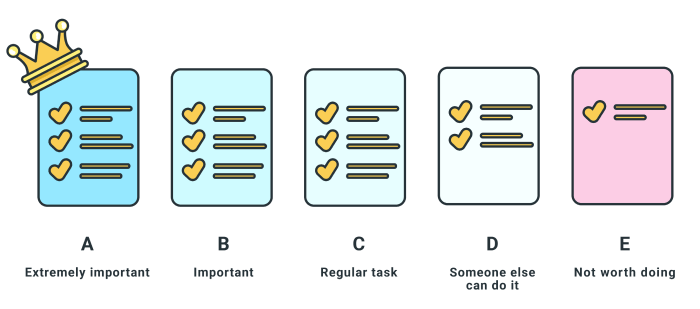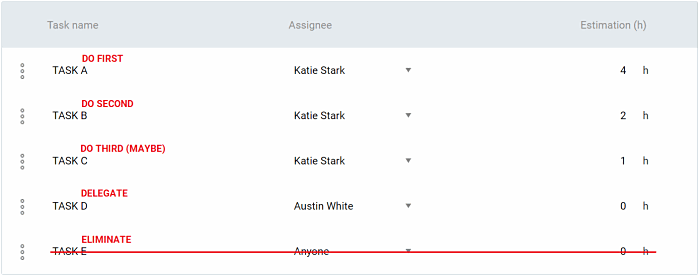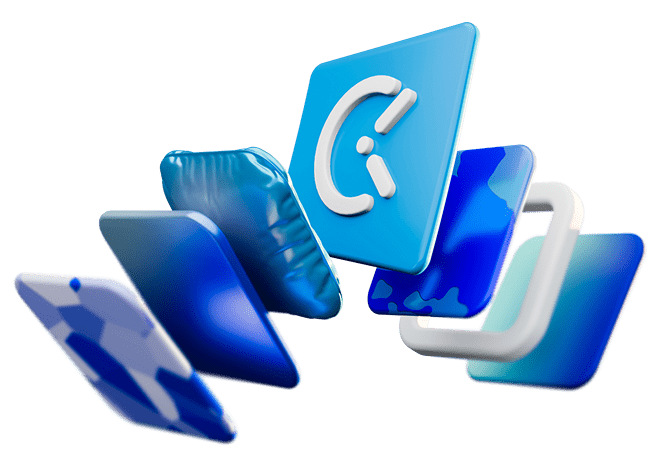Mark Twain once said: “Eat a live frog first thing in the morning and nothing worse will happen to you the rest of the day.”
Even though times have significantly changed since this world-renowned author shed these words of wisdom, the statement still holds true. Nowadays, although the prospects of eating an actual live frog are daunting, we can interpret these “frogs” as the tasks we dread.
Stick with us in this blog post and we’ll shed some light on the following topics:
- The meaning behind Twain’s “frog”
- Brian Tracy’s implementation of “eating the frog”
- Tips on mastering and prioritizing one’s time in a work day
- Advantages and disadvantages of using this technique
- How to use and apply the “eat the frog” technique
Table of Contents
What does the phrase “Eat that frog” mean?
“Eating that frog” means you have to do the task you dread first, before all other tasks. Once you have “eaten” your “frog”, you can rest assured that the worst is behind you, so you’re likely to take on a positive approach throughout your day.
In other words, “the frog” is an abstract representation of the obligation you’ve been putting off, hoping it’ll resolve itself or get done in the meantime — which is a faulty, preconceived idea that leads to decreased performance.
Who said “Eat that frog”?
Brian Tracy, author of one of the best books on productivity — Eat That Frog! 21 Great Ways to Stop Procrastinating and Get More Done in Less Time — was the one who coined the term, inspired by the previously mentioned Mark Twain’s quote.
In his book, Tracy advocates that focusing on your most important task, i.e. “ugliest frog”, is the best way to gain success, status, respect, and happiness in life — hence the whimsical name of his time management technique, i.e. “Eat that frog”.
Aside from recognizing the issue, in this book, Tracy also goes in-depth to showcase some of the best techniques to actually deal with your “frogs” in a way that can be accomplished by anyone.
Who can use the “Eat that frog” technique?
The highest percentage of people that are looking into this topic are usually business-oriented people searching for creative and quick solutions to boost their productivity levels. However, “eating your frogs” can be applied to various fields other than professional ones.
In essence, this technique is great for anyone who:
- Juggles multiple projects at a time,
- Faces deadlines throughout the week,
- Has trouble focusing on a specific task,
- Isn’t used to a daily routine, and
- Has issues prioritizing tasks.
What tasks can be “frogs”?
In essence, any task can be a “frog” — as long as you procrastinate to no end before doing it.
However, the following types of tasks are most likely to be classified as “frogs”:
An extremely difficult task
This is a task you keep putting off because:
- It would take too much of your time,
- It’s too difficult, or
- It’s simply boring.
For example, your “frog” may be doing an extensive research for a project, or filling out a lot of accounting paperwork.
An extremely important task
This is a task you keep putting off because it’s too important to be glossed over — but, it also seems to be too demanding for you to fully focus on it for a longer period of time.
Quite often, the fear of negative feedback or undesired outcome can greatly affect your confidence and willingness to do a certain task. Therefore, you postpone it until the very last minute and often find yourself in a time-scramble.
For example, it can be a call to a demanding client, or cost and time estimates you have to set for an elusive project.
An extremely important and difficult task
Sometimes, if you’re really out of luck, a task can be both boring and crucial for your work.
If you are a student, you might find yourself in a situation where you have to finish a project or an essay in a couple of hours because you’ve procrastinated for too long. Writing a 50-page paper is difficult enough as it is, let alone with time constraints — especially if you’re working towards a passing grade.
How to “Eat that frog”?
The gist to the “Eat that frog” time management technique is simple:
- Label your tasks to identify your “frog”
- Work on your “frog” first thing in the morning
- Once done with the “frog”, shift your focus to less crucial tasks in your schedule
In order to properly label your tasks and identify frogs, you’ll need to prioritize — by using the Eisenhower Matrix time management technique.
By proxy, the Eisenhower Matrix labels tasks according to their level of importance and urgency — but the system works just as well with “frogs”.
First, you’ll need to create a list of tasks you have to do the following day. Then, divide your to-do items into 4 quadrants, describing how much you want and need to do a task:
- Quadrant 1 — tasks you don’t want to do, but need to do
- Quadrant 2 — tasks you want to do, and also need to do
- Quadrant 3 — tasks you want to do, but don’t need to do
- Quadrant 4 — tasks you don’t want to do, and also don’t need to do
Your “frogs” are always the tasks you place in Quadrant 1 — i.e. the daily tasks you don’t want to do, but still need to do. At the start of each workday, simply work on the task from Quadrant 1 — only once you finish this task, should you move on to the tasks from the other quadrants.
It may seem relatively easy to accomplish, but the gist is not in the order in which you perform the tasks — it’s setting the precedent that you must not move on the next quadrant until you’ve completed the tasks from the previous one.
Once you get accustomed to the routine of jumping through quadrants, you should notice a spike in your overall performance. Therefore, applying the Eisenhower Matrix method can be your first step towards learning how to “Eat the frog”.
What if you have 2 “frogs”?
No two ugly frogs are equally ugly, and no two tasks are equally problematic.
But, when in doubt about several potential “frogs”, Tracy advises you use the ABCDE technique to identify the task you should tackle first.
Once again, you should create a list of tasks you have to do the following day. Then, label them with letters:
- “A” — your most important task, the one most likely to have serious consequences if you don’t finish it.
- “B” —the next most important task, the one not as serious in terms of consequences, but still important.
- “C” —the task that you could do, but it wouldn’t have any real consequences if you didn’t do it.
- “D” — the task that you can delegate to someone, to free more time for doing the “A” task.
- “E” — the task that you don’t really have to do, so you can eliminate it.

The important thing is that you don’t move on to the “B” task, or any other task, until you’re finished with the “A” task.
Differentiating between tasks and determining which one is more important than the other could be problematic. So, the best way to organize your time is to make a list of tasks and put them all together.
Take into account the factors that are universal, i.e. — deadlines, the time it takes to complete them, the level of research, and difficulty — and you’ll have a clearer picture regarding the distribution of tasks to each label (ABCDE).
“Eating that frog” with an app
There are several apps that are designed to help you “Eat your frog” — let’s see how you can apply this time management technique with the free time tracker Clockify.
1. First, create a project where you’ll manage your regular tasks and “frogs”.

2. Add tasks to this project – when naming the tasks, implement the ABCDE technique to mark them in order of importance

3. Once you have a clear list of your tasks for that day, you can select the “TASK A” in the time tracker and start working on it, before starting work on “TASK B”.

4. You can leave “TASK C” for later, delegate, or assign the “TASK D” to other members of your team in the project’s Task tab, and simply delete the “E” task from your schedule.
💡 Clockify pro tip
If you’re working on a project with a team of multiple people, keeping track of your teammates’ schedules will make a huge impact on productivity and delegating tasks.
Theories that support “Eating that frog”
A couple of theories support the premise that you should do the most important task first, as is advised in the “Eat that frog” technique.
According to the Serial-position effect, when people have to remember items on a list, they are more likely to remember the first and last items better than the middle ones.
Also, according to the Attention decrement hypothesis, people are more likely to pay attention to the information they hear first, than the information that follows.
This effect and hypothesis support the idea that you should do the most important or most difficult task first, because you are more likely to be able to focus on it at the beginning of the day.
Advantages of “Eating that frog”
It might seem scary, but dealing with your frog often outweighs the discomfort and cons that come with putting it off.
Here’s why.
“Eating that frog” develops a positive addiction
In his book, Tracy also refers to developing a type of “positive addiction” that stems from the sense of accomplishment you get when you finish a complex task. The release of endorphins — neurotransmitters that increase the pleasure levels in your brain — becomes associated with your work and regular completion of tasks, which in turn develops into a positive addiction.
He also notes that individuals who develop this type of “dependency” often experience high levels of clarity and confidence, even outside the professional spheres of life.
“Eating that frog” is an impact-driven technique
Doing the most difficult or the most important task first thing in the morning will have a great positive impact on the rest of your day.
This little achievement will help energize and motivate you, and you will glide through the rest of the day because you’ll know that all the other tasks that await you are easier.
“Eating that frog” makes prioritizing easier
When you start thinking about your tasks in order to find “frogs”, you’ll gain a great perspective about your daily workload.
You’ll be more likely to recognize what tasks aren’t important, what tasks you can discard entirely and what tasks you should really focus on.
In contrast, if you don’t prioritize your tasks, and do your work in random order, you may spend too much time on trivial tasks, and have no time left for your most important assignments.
“Eating that frog” leaves you with more time for enjoyable tasks
Everyone has a certain type of task they don’t enjoy.
Some don’t like creating project estimates, some don’t like writing reports, and some don’t like making phone calls or answering emails.
In any case, if you do these “dreadful” tasks first thing in the morning, you’ll feel like you have more time for tasks you actually enjoy.
Disadvantages of “Eating that frog”
This time management technique also comes with some disadvantages — at least to some people, and in some situations.
Here’s why “Eating that frog” may be a challenge to you.
“Eating that frog” makes the start of the day difficult
Focusing on a new “frog” each day can be difficult, because we are essentially labeling out the start of our workday as the time for our worst ghouls, which may be demoralizing on its own.
But, discipline and practice can help you finish these worst tasks faster.
In order to finish these “frogs” faster, you can practice your “ability to focus without distraction on a cognitively demanding task”, or “deep work”, as Cal Newport calls it.
When you start this demanding task, don’t shift your focus on anything else until you’ve finished it; you can take breaks, but when you’re working, avoid distractions.
By practicing your ability to perform “deep work”, you’ll finish these important tasks faster, move on to “regular” tasks quicker, and even finish your daily workload earlier in the day.
You’ll have a great sense of progress, which will help you feel more motivated, and your productivity levels will be on the rise.
“Eating that frog” may be too rigid and impractical at times
The rules of the “Eat that frog” technique state that you must tackle the most important/difficult task first, which can be a strict rule.
What if your most important task changes during the course of the day, and you have to focus on something else?
In such cases, it’s best that you act according to your new priorities. For example, you can add the new task on your ABCDE list and label it as “A”, marking all the other tasks as less urgent.
In the end, the best you can do to thwart the disadvantages and make the most of the advantages of this technique, use the “Eat that frog” rules as a starting point — and tweak them to fit your needs.
“Eating that frog” may not be dynamic enough for everyone
Having a workplace routine is a good thing when you need to finish a lot of tasks each day. But, it can also be overwhelming with each passing day. This results in decreased productivity due to lack of motivation, which in turn results in employee disengagement.
In relation to our topic, the ABCDE technique combined with “the frog” can nurture a lack of creativity, which may reflect poorly on your performance. Therefore, it’s important that you learn to recognize when this technique is useful and when you should go “off the books”.
Tips for “Eating that frog” easier
You’ve made it here, read everything, and you’re still left confused on how to resolve the issue of doing your worst task first. Well, here are some frog-eating tips that’ll surely be of benefit to you.
Practice planning
The “Eat that frog” technique is all about planning, as you:
- Think about your tasks
- Write your ideas down
- Make priorities
- Identify your goals
- Take necessary actions
It may sound time-consuming to write down all your tasks each day, but this actually saves you time. According to Tracy, 1 minute of planning may save you as much as 5 –10 minutes during execution, if planned out right.
As time goes by, creating these lists and prioritizing tasks on paper will become a habit, and you’ll learn to do it faster, which will save you even more time.
Build a sense of momentum
Once you have made your plan, don’t hesitate, just dive right into your work. Focus on what you are doing, and focus on your goals and objectives.
You’ll notice that it’s much harder to start working on a task than to continue working on it. This is known as building your momentum — once we start going, we’ll keep going until we reach a sense of accomplishment.
So, if you feel demoralized at the thought of doing your most demanding tasks first thing in the morning, remember that the first step is always the hardest. It’ll be easier once you gain momentum and really focus on the task.
Parse the tasks into smaller chunks
When working, people love the feeling of reaching their goals, because they love the sense of completion.
But, reaching the end goal of a project may seem far from reach, especially when you’re just starting.
In order to get that sense of completion at equal intervals in the project, and not just at its end, you should parse your project into smaller tasks — this will make your goals seem more manageable, because you’ll be striving for one part of that goal at a time.
For example, your “frog” is a project you have to complete in 2 hours.
So, you put this project on paper, and notice you can parse it into 3 tasks — these tasks are parts of a larger goal, and you can treat them like mini-goals you have to complete.
Once you complete each of the three mini-goals, you should take a short break and reward yourself for your efforts thus far.
You’ll feel a sense of completion, and the end of the project will come quicker than expected, at least from a psychological point of view.
💡 Clockify pro tip
Want to make sure you stick to a routine and take breaks from your “frogs”? Combine “Eat that Frog” with the “Pomodoro” time management technique, and work with a Pomodoro Timer that automatically tells you when to take a break from your “frogs” or resume work on them.
Final words
Eating your frog, i.e. dealing with your most demanding task first thing in the morning is like the wind beneath your wings when it comes to your work schedule — because finishing 1 crucial task will always bring your quicker, more efficient results, less fatigue, and a stronger sense of accomplishment than finishing 5 out of 6 mundane tasks.
And that’s why you should always aim for it.
✉️ If this blog post about the famed time management technique was enough to intrigue you, tell us about your experience and some of the ways you think you can improve on the “Eat the frog” technique at blogfeedback@clockify.me



